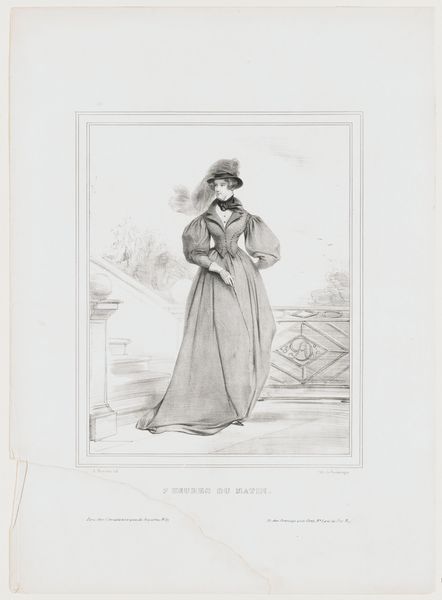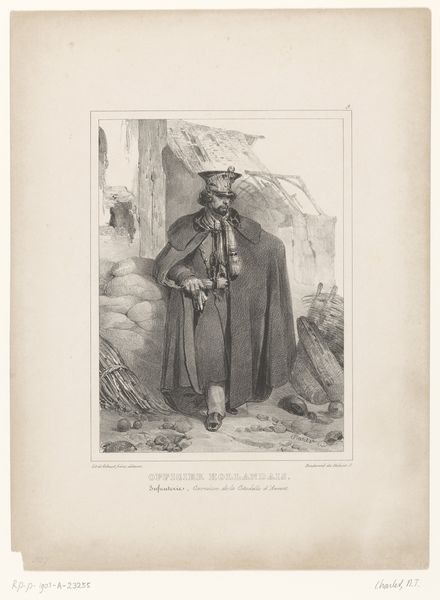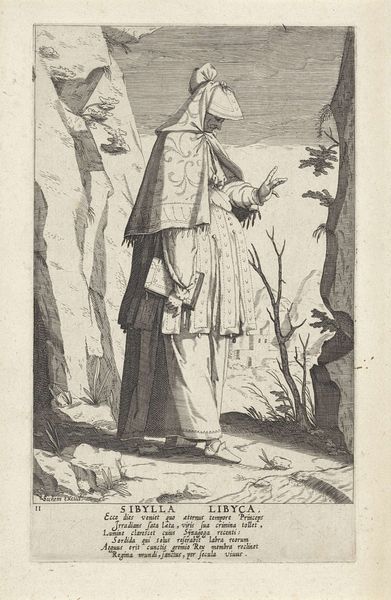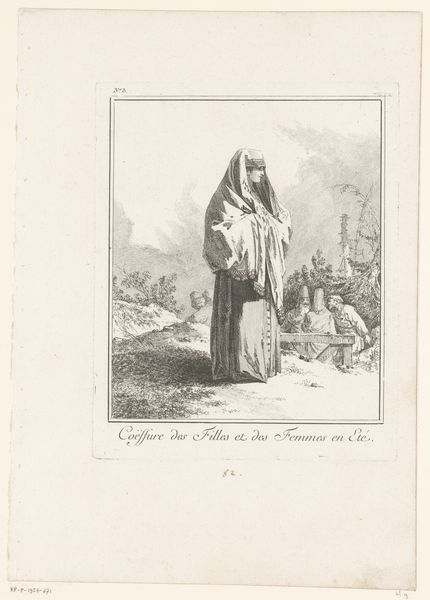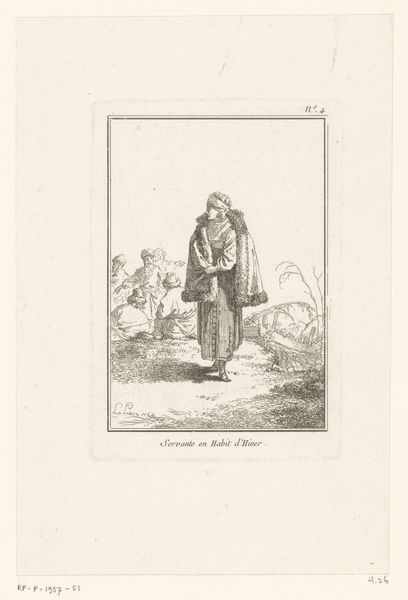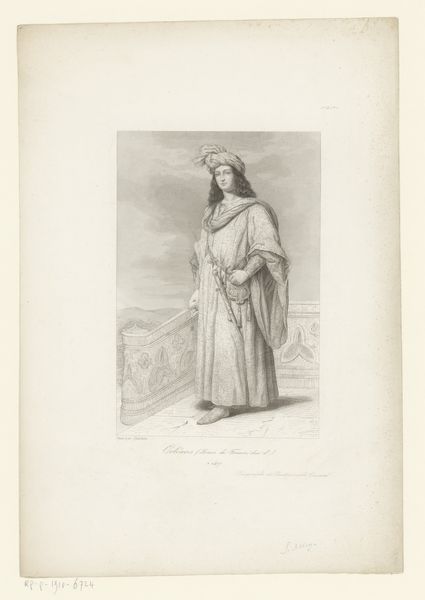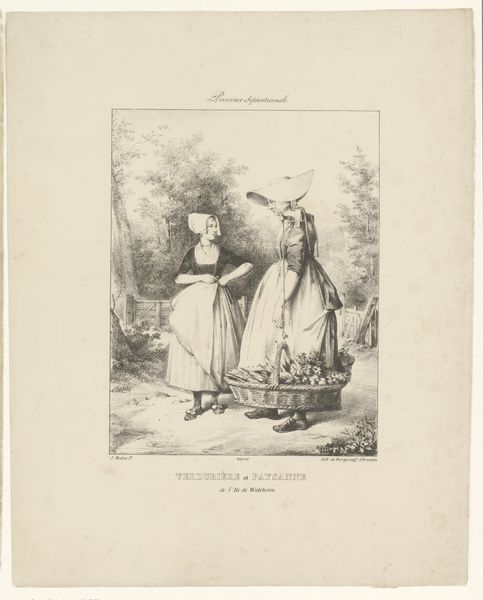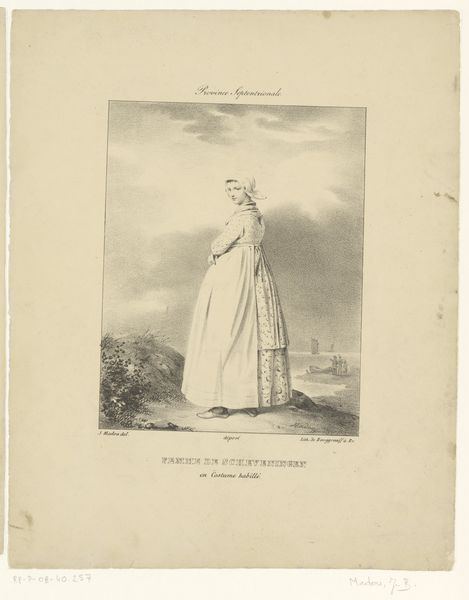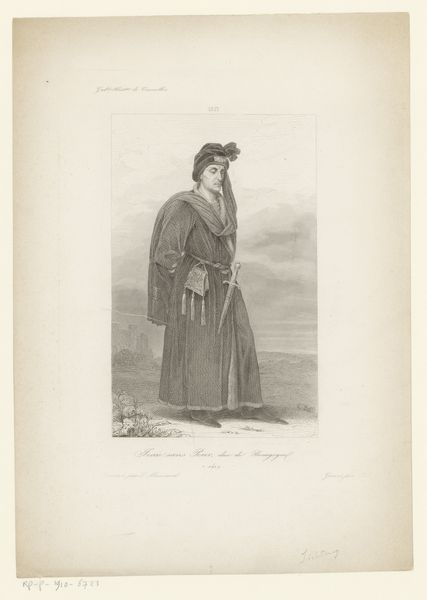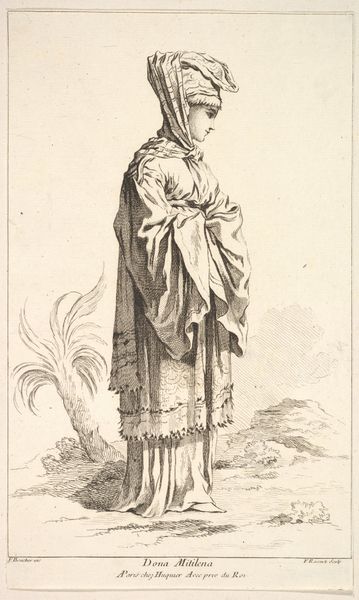
Jonge vrouw uit Ingermanland (Ingrië), naar rechts gekeerd 1744 - 1781
0:00
0:00
print, engraving
#
portrait
#
neoclassicism
# print
#
15_18th-century
#
genre-painting
#
engraving
Dimensions: height 217 mm, width 152 mm
Copyright: Rijks Museum: Open Domain
Curator: Let's discuss "Young Woman from Ingria, Facing Right," a print by Jean-Baptiste Le Prince, created sometime between 1744 and 1781. What are your initial impressions? Editor: Austere. It’s a cool palette, monochromatic. It feels a bit melancholic, isolated even, despite being a portrait of a person in a landscape. Curator: Indeed. As an engraving, the creation of this image involves significant technical skill in manipulating metal and acid to achieve these subtle gradations of tone. Each line etched contributes to both form and shadow. It invites contemplation on craft and reproduction. Editor: And consider the context—Ingria, today part of Russia, was then a contested borderland between Russia and Sweden. The young woman's traditional dress speaks to cultural identity and perhaps resilience in a region undergoing geopolitical shifts. Is she a representation or romanticization of this contested zone? Curator: Le Prince’s decision to portray this “genre painting” highlights an interest in ethnography—a cataloging, in print, of perceived “types” or traditions. But think too about the availability of such prints: mass production brings imagery like this to new audiences. Editor: Which underscores the power dynamics at play. Who gets to represent whom? Is this image contributing to understanding or to exoticization? Her averted gaze further obscures her perspective, placing us, the viewers, in a position of power. What did Finnish viewers from that period make of such images? Curator: Precisely. Moreover, let’s remember that printmaking relies upon distribution and consumption to be fully realized. Consider where the copies ended up. Private collections? Scientific studies of different cultures? Understanding where and how the prints moved would paint a far richer image than only a superficial reading of the character portrait itself. Editor: I agree. Seeing her as an individual also seems impossible given the work's intention, it's a tension between documenting and dehumanizing that still plays out today. Thanks for highlighting the distribution aspects too, it certainly widens our perspective. Curator: And in understanding this work’s production and distribution, we find richer meanings. The technical, the material and economic surround and contribute just as heavily. Editor: Absolutely. The image becomes far more potent when situated in these broader contexts of cultural exchange, identity, and the politics of representation.
Comments
No comments
Be the first to comment and join the conversation on the ultimate creative platform.
